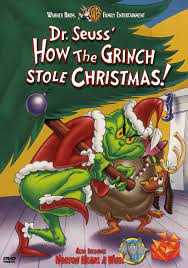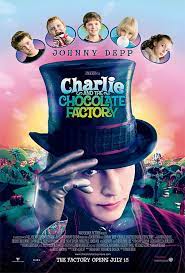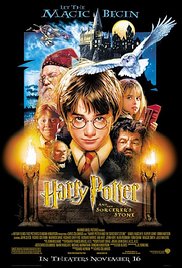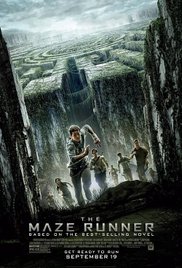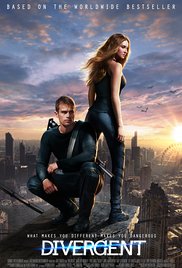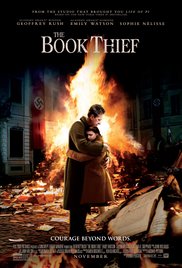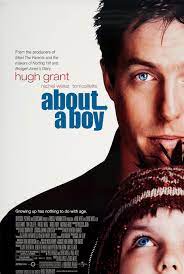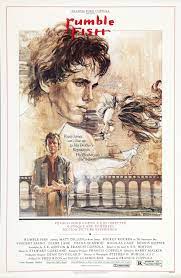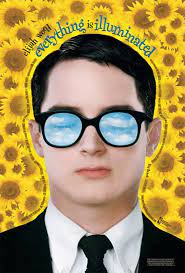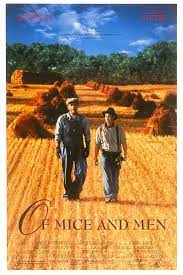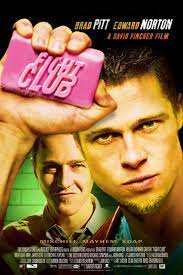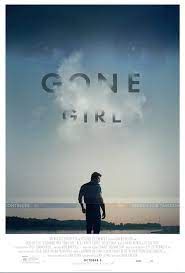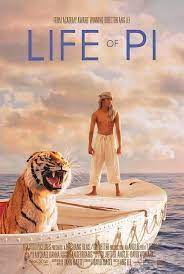
18 Movies for ESL Students to Watch and Learn From
In native English classrooms, teachers often get their students started with a book and then let them watch the movie based off of it as a reward.
But movies have so much more to offer.
You can also use the movie adaptations by themselves to teach and encourage your students to explore the English language.
Today, we’ll take a look at some popular movies based on books and what theymove can do for your ESL students.
Contents
Download: This blog post is available as a convenient and portable PDF that you can take anywhere. Click here to get a copy. (Download)
ESL Movies for Beginners
1. “How the Grinch Stole Christmas”
Everyone likes Christmas—that is, everyone who isn’t the Grinch, a creature who lives by himself in the mountains (with his dog) and a disposition as sour as his looks.
One day, when he can no longer stand the noise and the bells and the sounds of Christmas celebrations from the nearby town of Whoville, the Grinch takes it upon himself to “steal” Christmas.
Why It Works for ESL Students
It’s hard to go wrong with Dr. Seuss, especially when working with kids or beginners. The language Seuss uses may throw in a ton of invented words, but the great stories more than make up for that. And speaking of the language, the rhymes and rhythm of the story are fun and can help students learn pronunciation.
There’s also a live-action version of the film released in 2000, though I personally prefer the animated version. Not only is the latter much shorter (making it easier to digest), but students don’t need to be too familiar with Christmas to understand what’s going on. All celebrations have some kind of tangible representation, so your students should be able to easily grasp the significance of the Grinch stealing Christmas decorations, gifts and the feast.
2. “Charlie and the Chocolate Factory”
Charlie Bucket, a boy from a poor family, lives near the Wonka Factory, which recently closed down due to issues with rivals attempting to steal the factory’s secrets—specifically, its fantastic candies that are unlike any other.
One day, Willy Wonka, the owner of the Wonka Factory, announces a contest where five winners of Golden Tickets (which have been randomly tucked into five Wonka Bars worldwide) get to have a free tour of his factory, an unlimited supply of chocolate and another surprise prize by the end of the tour. Charlie happens to win one of the tickets, and so the plot kicks off.
Why It Works for ESL Students
Roald Dahl’s writing is clear and highly accessible to children, and his books remain beloved even decades later. In terms of vocabulary, this is certainly more complicated than Seuss’ books, but the accompanying illustrations help make it clearer.
Also, even though students may have difficulties with certain words, this can be a good introduction to reading for gist and understanding unknown vocabulary from context. You can emphasize that they need not understand every single word as long as they get the general idea.
Like the “Grinch,” this book has two movie adaptations. The 1971 musical version starring Gene Wilder was actually titled “Willy Wonka & the Chocolate Factory,” while the 2005 Tim Burton-directed adaptation starring Johnny Depp kept the name of the original book.
Interestingly, the 1971 version seems to stay a bit closer to the story, while the 2005 version used advances in film technology to better embody the aesthetic the book describes. Either way, many students seem to like Johnny Depp, so that may be the one to go with.
3. “Miss Peregrine’s Home for Peculiar Children”
“Miss Peregrine’s Home for Peculiar Children” is a thrilling tale of children with special abilities trying to protect themselves from both the outside world and the bad guys out to get them. The story follows Jake’s discovery of the peculiar children and his fight to keep them safe.
Why It Works for ESL Students
This movie is great for adult ESL students and teenagers learning to speak English. Characters speak with both American and British accents, which can be a nice exposure for your students.
And while the movie is typically creepy (Tim Burton was the director, after all), the plot is simple. The children are hiding from the bad guys, and the bad guys are coming to get them.
If your students choose to read the book, there are plenty of pictures throughout to help aid their comprehension, which makes it a nice choice for ESL students.
4. “Harry Potter and the Sorcerer’s Stone”
“Harry Potter and the Sorcerer’s Stone” is based on the hugely popular book by J.K. Rowling. It tells the story of Harry, who has lived in the regular world all his life, and has just found out that he and his deceased parents are famous wizards.
“The Sorcerer’s Stone” is an introduction to the world of magic Harry has been missing his entire life.
Why It Works for ESL Students
The movie and book are very similar, which makes it a good choice for ESL students who aren’t too experienced with reading in English. You can feel good about using the book and the movie with upper beginners and up. Just keep in mind that the actors speak British English throughout the movie.
In fact, the strength of the “Harry Potter” series is not only that it’s available in multiple formats such as book, audiobook and movie, but also that it’s available in many languages worldwide.
As explained in the video above, you can find “Harry Potter” in your students’ native language and use that to help them learn English.
In fact, it’s very likely that your students already know the plot and might’ve even already read or watched “Harry Potter.” That makes comprehension easier, and your students will be able to focus on additional vocabulary and grammar activities.
5. “The Maze Runner”
“The Maze Runner” is the story of Thomas, who finds himself without memories in a community of teenage boys, none of whom can remember where they came from or why they are there.
The boys live in The Glade, a section of land surrounded by the giant walls of a maze. Thomas and the other boys must solve the maze to escape and get their lives back.
Why It Works for ESL Students
“The Maze Runner” is a good movie for ESL students because the plot is very simple: Thomas must discover a way out of The Glade.
Much of the plot can be understood visually rather than depending heavily on dialogue, which makes it good for beginning and low intermediate ESL students.
Following up with the book is a good choice because the writing is relatively simple but the story is still interesting and suspenseful.
6. “Holes”
In “Holes,” a young boy is wrongfully convicted of a crime and is sent to a detention camp in the middle of a desert. There, he (along with others like him) is forced to dig holes for a mysterious reason.
Why It Works for ESL Students
The 2003 movie adaptation has a great cast that includes Sigourney Weaver, John Voigt and Shia LaBoeuf. The English is generally close to the book, and many parts of the plot involve flashbacks. That means your students can listen to a character talk about events while watching them on the screen. The movie is also very well-made and faithful to the book, even if it didn’t get much attention when it came out.
As for the book itself, it’s quite engaging and interesting, and the characters are well-developed, at least for a “kids’” book. It starts off using very short, clear sentences, and gradually picks up the pace by adding longer paragraphs just when readers are getting used to the style.
Louis Sachar is an excellent author, and the story deals with some difficult issues like race, murder, justice and rehabilitation in an entertaining way without talking down to readers.
ESL Movies for Intermediate Learners
7. “The Fault in Our Stars”
Have your tissues on hand when you view this film with your students. “The Fault in Our Stars” is a raw and honest look at life in the midst of tragedy.
The story follows Hazel in her battle against terminal cancer and Gus as he lives life as a cancer survivor. It’s an emotional movie that encourages viewers to live life to the fullest each and every day.
Why It Works for ESL Students
No matter what country a person calls home, everyone lives life feeling the same emotions—joy, sadness, despair, elation and the like. Intense emotion is something that everyone, including each of your ESL students, can relate to.
As your students watch this movie or read the book it’s based on, the struggles that Hazel and Gus face will touch them in their deepest places and might just spur them on to make the most out of every day they have.
8. “The Hunger Games”
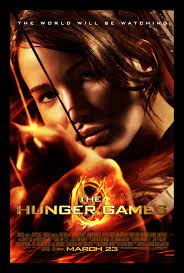
To punish its citizens for a revolt that occurred many years ago, the government demands two tributes from each district—one boy and one girl between 12 and 18 years old—to compete in the annual Hunger Games, where they must fight to the death until only one survivor remains.
Why It Works for ESL Students
The movie is visually stunning, and it brings the story to life in a way that really builds on the great visuals already described in Suzanne Collins’ work. It can also lead to interesting discussions regarding the future of the world, totalitarian structures, friendship, love and family.
As for the books, they’re hugely popular (so much so that many of your students may have already read them) and the movies have also been incredibly popular with various age groups.
The writing is at a good, intermediate level that’s neither too easy nor too challenging for your students. The style is noteworthy as well, since it’s written in first person present.
9. “Divergent”
“Divergent” is set in post-apocalyptic Chicago, its inhabitants divided into five factions depending on their dominant personality trait.
Tris, the protagonist, leaves Abnegation, the faction of selflessness, to join Dauntless, the faction of bravery. The movie follows her journey to become a part of a new community and culture.
Why It Works for ESL Students
This movie is great for starting a conversation on culture since Tris is submerged in a culture completely different from the one she has known her entire life.
If you’re teaching ESL in an English-speaking country, many of your students will find themselves in similar positions. The members of your class will relate to Tris on the screen as well as on the page, and her struggle to understand a new world and find her place within it.
10. “The Book Thief”
“The Book Thief” tells the story of Liesel, a young girl in war-torn Germany in the 1930s. At the start of the story, Liesel is illiterate, and it’s her foster father Hans who teaches her to read and inspires in her a love of the written word.
Why It Works for ESL Students
The movie takes a very personal look at historic events that affected people all over the world. Your students will probably have studied these events in their home countries and first languages, so they will have some knowledge of the context that the movie and book take place in. This will give them an advantage in comprehension and allow you to push them a little harder than you might with other material.
Be aware that, throughout the movie, the actors speak with a German accent. This can be a challenge for ESL students who may be used to hearing a neutral accent in spoken English, but it’s also a good one. It will challenge students’ listening skills, making them better overall speakers (and listeners) of English. But because of this, you may want to reserve this movie for your intermediate and advanced students.
Also, your students may be able to relate with the main character’s struggle to learn a new language. You can zero in on the short scene where Liesel finishes her first book, “The Gravedigger’s Handbook,” to where Hans shows her the dictionary he has created on the walls of their basement, and make a Q&A or activity about it.
11. “About a Boy”
“About a Boy” is a rom-com about Will Freeman, a freewheeling bachelor who attends a meeting of single parents to meet single women. Of course, since the meeting is for parents, Will has to pretend that he has a toddler of his own.
Unfortunately for Will, Marcus—the son of one of the other parents attending the meeting—discovers his ruse. Marcus uses this information to blackmail Will, and shenanigans—as well as some much-needed character development for Will—ensue.
Why It Works for ESL Students
The book isn’t necessarily easy reading, but it’s thoroughly entertaining. The plot is funny and the language includes a lot of useful slang (although it’s British English, so keep in mind that some vocabulary may be different if that’s not what you’re teaching).
The book also switches perspectives from Marcus (the boy) to Will (the man-child), but remains in the third person, which means that it plays with point-of-view but doesn’t make things too confusing for ESL readers.
The movie adaptation from 2002 is arguably even better than the book. For class use, you can examine what it means to be a family or a role model, how people redeem themselves and how they can live a fulfilled life.
12. “Rumble Fish”
“Rumble Fish” revolves around two brothers: Motorcycle Boy, an ex-gang leader who wants to leave his life of crime behind, and Rusty James, the younger of the two brothers who wants to get into Motorcycle Boy’s old way of life.
Naturally, this sets up the conflict that will drive the film through to its tragic conclusion.
Why It Works for ESL Students
The 1983 movie, directed by Francis Ford Coppola and starring a cast with about a dozen actors who are still famous today, is pretty incredible, especially considering that most people probably haven’t even heard of this adaptation of one of S.E. Hinton’s books.
The book was published in 1975, so many aspects of it are likely to be dated, like its book’s language. A few slang words—including the word “rumble” in the title itself—may have fallen out of fashion and can therefore be confusing for students. If you’re from a later generation, you may find some of these words confusing as well, so make sure you watch the movie before class, take note of anything that seems odd and look it up.
That said, the majority of the language is still authentic, and the characters spend most of the book immersed everyday life, talking about what young people like to talk about and doing what young people like to do. Most of that vocabulary is timeless, and can help students build up their vocabulary to talk about their own lives.
ESL Movies for Advanced Learners
13. “Everything is Illuminated”
A young Jewish-American man, motivated by a passion for uncovering his family history, travels to Ukraine to find out what happened to his grandfather during World War II.
Why It Works for ESL Students
The 2005 movie starring Elijah Wood manages to convey the eccentric spirit of the story in a beautifully visual way. “Everything is Illuminated” can complement units that talk about World War II or the Holocaust, and could be woven into discussions about ancestry and identity.
Also, the book is told through various authors and from different perspectives. One narrator, Alex, is Ukranian, and as such his English is full of non-standard phrases and words (indeed, the title of the book is possibly just his attempt to convey the idea “all clear”). That might actually be good, though, since you can highlight the importance of communication and contrast it with the use of “correct,” standard English. It’s also interesting to see Alex’s English change and evolve throughout the story.
14. “Of Mice and Men”
The movie centers around the two men depicted in the movie poster: George Milton, who is healthy both physically and mentally, and Lennie Small, who is the complete opposite.
Forced to flee their employer during the Great Depression (due to attempted rape charges filed against Lennie), the two end up on a ranch, where trouble unfortunately continues to follow Lennie.
Why It Works for ESL Students
Compared to “Everything is Illuminated,” “Of Mice and Men” uses the relatively simpler language characteristic of John Steinbeck’s work. The movie follows the book’s plot very closely, and can be used in class to practice comparing and contrasting the two mediums.
Also, because one of the main characters has an intellectual disability, the movie can also be used as a jumping off point for discussions on how such individuals should be treated in society. Even though the movie is set in a completely different era, you may want to touch on how prevailing societal beliefs back then (and arguably even now) affected Lennie’s ability to live a normal life.
15. “Fight Club”
I would give you a summary of what this movie is all about, but then I’d be violating the first rule of Fight Club—that is, to not talk about Fight Club.
I’m kidding, of course. Otherwise, I wouldn’t be devoting an entire section on why your ESL students can benefit from this film. There’s also a good reason it’s not easy to summarize this film, which I’ll get to in a bit.
Why It Works for ESL Students
I put this under the “Advanced” section for a reason. The movie goes into plenty of tangents, but they actually seem to highlight the gist of the film.
For example, a scene may show a dialogue between two people, when the narrator’s voice-over all of a sudden throws in a tangential sentence or two. If the students understand the tangent, more power to them, but it’s not always crucial to understanding what’s going on in the main plot.
Many people love the book “Fight Club” is based on, but it’s not necessarily the most ESL-friendly book out there. In fact, it’s likely to be challenging for many readers. There are frequent asides and tangents that don’t really have much to do with the plot at hand at any given moment. That can be frustrating, but it can also be a great way to teach ESL students to read for gist.
Despite its title, the story is actually more of a critique of consumerism, masculinity and modern society, although there is some fighting. You can explore these topics in class discussions, and can include conversations about mental health, gender relationships and violence.
16. “Gone Girl”
When Amy Dunne suddenly vanishes after the fifth anniversary of her marriage to the writer Nick, Nick becomes the prime suspect. As more details get revealed about the couple’s life, it would appear that not all is well in paradise.
Why It Works for ESL Students
This is another dark yet slightly funny story. The book is definitely more accessible for ESL readers than “Fight Club,” but it’s significantly longer.
The movie is directed by David Fincher, who also directed “Fight Club,” so many stylistic elements are similar. Because there’s a mystery element to the film, you can ask students to pay close attention to clues that hint at the conclusion it eventually arrives at. Can they give any alternate interpretations to the characters of Nick and Amy?
17. “To Kill a Mockingbird”
This 1962 film is set in Alabama, where Atticus Finch, a widowed lawyer, attempts to defend a black man against false criminal charges.
He also tries to educate his children, one of which is the narrator of the film, against the dangers of choosing to view certain individuals as “the other” rather than as human beings in their own right.
Why It Works for ESL Students
The themes explored in this story—good and evil, racism, family, tolerance and growing up—are universal and never get old. Both the book and movie are regarded as classics, and with good reason.
The book has some aspects of a southern dialect, so that can be interesting for ESL readers, especially when comparing the speech of people from different social classes. Atticus Finch, both in the book and as embodied by Gregory Peck, also provides an excellent example of clear, “proper” English.
18. “Life of Pi”
The theatrical poster is striking enough: a lone boy on a boat with a tiger. Believe it or not, this isn’t a fantasy flick: it’s an adventure film about survival, human nature and the value of a good story.
And once your students watch the film itself, they’ll probably agree that the plot is even more striking than the poster—which is a feat in itself! In fact, the film has won a number of awards—including the Academy Award for Best Director, Best Cinematography, Best Original Score and Best Visual Effects.
Why It Works for ESL Students
Like “To Kill a Mockingbird,” this movie deals with good and evil, values, family and human dignity. If your current lesson revolves around those topics, “Life of Pi” weaves them in a thoughtful way that’s sure to spark some heated classroom discussion.
Also, it provides a good opportunity to discuss the concept of allegory and how this film is a good example of it. What do the animals represent? Why did the main character choose to tell his story in allegory form instead of a straightforward narrative?
Movies may be primarily made to entertain, but don’t let that stop you from using them as a learning tool.
Make the most of what Hollywood has to offer and create memorable English movie lessons in the process.
And if you’re looking for more authentic learning materials, check out our list of books for ESL students:
The 18 Best Books for English Language Learner (ELL) Students of Any Level | FluentU English Educator Blog
Books for English language learners (ELLs) should be engaging, culturally relevant and appropriate for the level you’re teaching. Check out these 18 excellent ELL books…
Download: This blog post is available as a convenient and portable PDF that you can take anywhere. Click here to get a copy. (Download)
